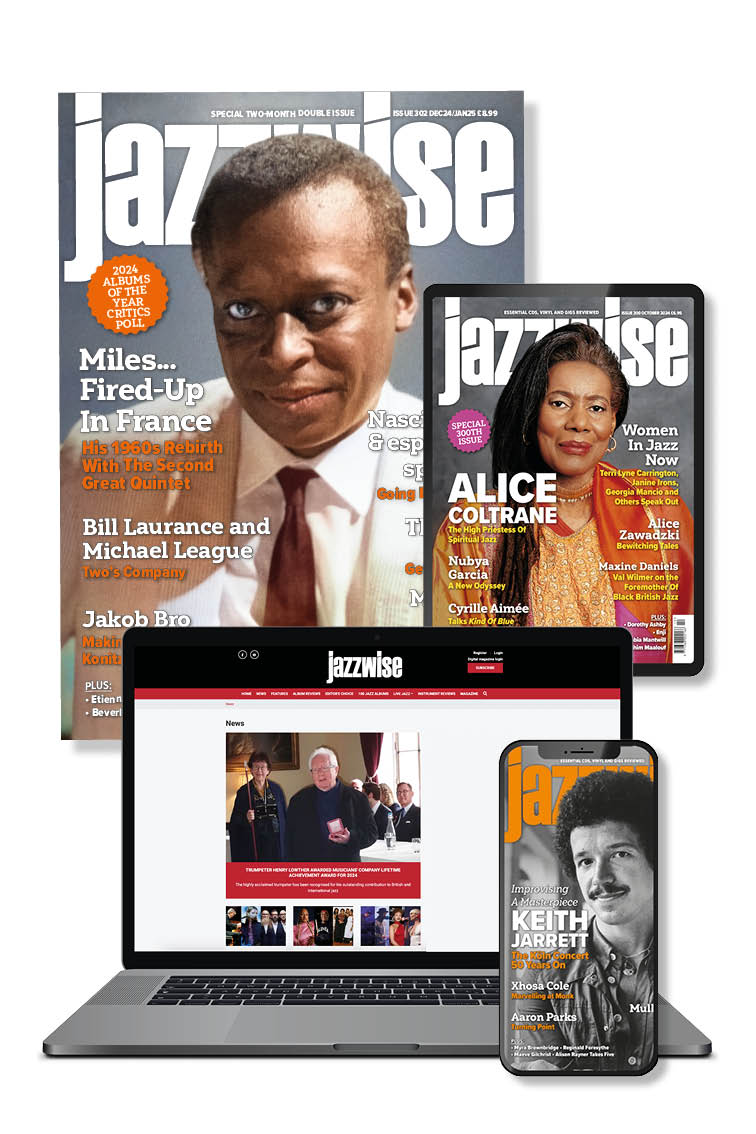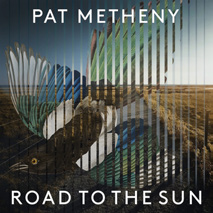Album Interview: Pat Metheny: Road to the Sun
Editor's Choice
Author: Stuart Nicholson
View record and artist detailsRecord and Artist Details
Musicians: |
Pat Metheny (42-string g) |
Label: |
Modern Recordings/BMG |
Magazine Review Date: |
March/2021 |
Media Format: |
CD, LP, DL |
Catalogue Number: |
538639322 |
RecordDate: |
Rec. date not stated |
Pat Metheny's fascinating odyssey through music continues. Perspicacious as ever, his change of record label to Modern Recordings/BMG presented the opportunity to put forward a project unique in his discography that features two major works he composed and arranged, performed by five of the world's leading classical guitarists; a solo guitar performance by Jason Vieaux of Metheny's four part suite ‘Four Paths of Light’; the album centrepiece ‘Road to the Sun’, a six part suite, performed by the Los Angeles Guitar Quartet and a solo performance by Metheny on 42-string guitar of Arvo Pärt's ‘Für Alina' by way of a ‘bonus track’. Each performance, although demanding to be considered as a thing in itself, together combine to produce an absorbing listening experience. There is no improvisation here, but Metheny has always argued he sees music as music, rather than get bogged down in genre distinctions. Yet with these two suites of substantial music, Metheny's imprimatur shines through and in so doing he has, perhaps ironically, created a genre he can't avoid, Metheny music.
Jazzwise talks to Pat Metheny about his new album
Did you have to immerse yourself in the classical guitar ‘tradition’ before embarking on this project or have you followed (and absorbed) it behind the scenes, so to speak, over the years?
Regarding both the LAGQ and Jason, I was very aware not only of their playing, but also the nature of their incredible talents and abilities requiring notated, non-improvised material. That tradition mandates that the composer details every single aspect of what is to be played on the page by generating notation that can be viewed and utilised by not just these performers, but eventually by other players in the future. There is a unique kind of pleasure in knowing what is on the page can stand as a complete set of instructions to get to that musical result.
You have spoken of coming up with something that might ‘challenge and inspire’ the (classical) virtuosity of Vieaux, which implies a deep engagement with the genre on your part.
It is always tough for me to relate to questions involving genre. Music is one, big, singular thing for me that exists in a realm that has no borders. These are musicians who have a very particular tradition that requires every aspect of the music they are presented with to be detailed in notation from beginning to end. Through those notes, they can find their place in the music through the interpretation of that written material. I wanted to offer them a setting that shows them to be the fantastic musicians that they clearly are, but also to give them stuff that will push them to places that they might not normally get to.
What were your thoughts when conceptualising the kind of direction you wanted to explore for ‘Road to the Sun’ for the LAGQ?
The LAGQ has been a real force in the popularisation of the guitar quartet format. Multiple guitars can be such a great sound, and in a setting like this it is possible to sidestep some of the not-so-great things that can sometimes occur with more than one guitar. Having the 7 string guitar in there is also really welcome to get to some wider voicings and the support that the extra notes down there give you.
Arvo Pärt seems to have crept into the consciousness of Western audiences almost by stealth over the last ten years or so, how did you became aware of him and become sufficiently moved to perform one of his pieces?
I probably became aware of his music as everyone else did over these years in the same kind of way. He has the capacity to connect with people in a deep way by creating an environment where you start to notice things that you might have not noticed before. That piece is a well known piano piece; I imagined it on the 42-string guitar. When I finished both Jason's piece and ‘RTTS’ with all of the roving modulations, having a diatonic piece that stays in one harmonic zone as a bonus track seemed like it could be an interesting way to conclude the record.

Jazzwise Full Club
- Latest print and digital issues
- Digital archive since 1997
- Download tracks from bonus compilation albums throughout the year
- Reviews Database access
From £9.08 / month
Subscribe
Jazzwise Digital Club
- Latest digital issues
- Digital archive since 1997
- Download tracks from bonus compilation albums during the year
- Reviews Database access

